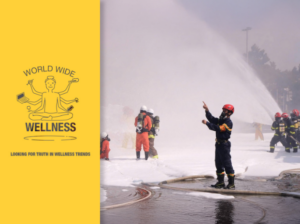But just how good for us is this dairy, grains and legume-free diet? ECU PhD candidate Angela Genoni is determined to find out.
She’s recruiting 100 people to volunteer their time for a three-day period to study the long-term impacts of the paleo diet.
She’s looking for people who’ve been on the paleo diet for a year, as well as others who have followed a normal healthy diet and are not on medication. She’ll then compare the health statistics of the two groups.
DETERMINING DIET’S HEALTH-IMPACT
Angela will study participants’ body composition—their height, weight and percentage of body fat. She’ll send them home with a small freezer in which they will store samples of urine and stool they collect during the three-day period. Participants will also record what they eat over the three days and have blood taken at the conclusion.
Angela will then study the samples to determine changes to blood biochemistry, such as cholesterol levels and glucose levels. DNA sequencing of the stool samples will reveal what types of bacteria reside in the gut.
She says gut health is an emerging area of research among health scientists.
“We’re starting to realise that there are a lot of illnesses—things like heart disease, diabetes and some types of cancer—that can be linked back to types of bacteria in the gut,” Angela says.
“DNA sequencing of stool samples will show us what types of bacteria are there, and their relative abundance.”
“We’re starting to realise that there are a lot of illnesses—things like heart disease, diabetes and some types of cancer—that can be linked back to types of bacteria in the gut.”
USING THE DATA
The information collected will provide a snapshot of the participants’ health. Angela will then compare health statistics of paleo and non-paleo dieters.
The study will complement existing research conducted by Angela and her colleagues, in which they put people on a paleo diet for a month. They assessed their weight and health at the start and end of the month study period.
This study found that people on the paleo diet lost more weight than those who were not, and measured greater reductions in waist circumference.
“People on a paleo diet also tended to eat lots of fruit and vegetables which is very positive, and had a low intake of refined sugars, which is also positive,” Angela says.
“But these diets also tend to be high in fat and protein, and low in calcium, which may have a longer-term impact on health.”
Anyone willing to volunteer for the research should contact Angela on a.genoni@ecu.edu.au.






